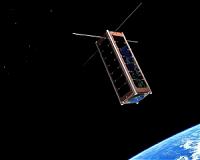 |
El Segundo CA (SPX) Jul 27, 2010 Boeing has announced that it met or exceeded all the requirements of the Critical Design Review (CDR) of the Ultra High Frequency (UHF) hosted payload and its host spacecraft, the Intelsat 22 satellite (IS-22). Boeing is building IS-22 for Intelsat, the leading provider of fixed satellite services worldwide. The UHF payload, built by Boeing, is being placed on the satellite by Intelsat to be used by the Australian Defence Force (ADF). When operational, IS-22 also will provide commercial video, network and voice services to Intelsat's customers throughout the Indian Ocean region. "Successfully completing this final design review has allowed us to begin assembly, integration, and environmental testing of IS-22," said Craig Cooning, vice president and general manager of Boeing Space and Intelligence Systems. "The review also strongly validates the Boeing 702MP platform. Its modular design and the common manufacturing processes we use will help ensure the satellite will operate effectively on orbit." "The successful CDR reflects the experience of Intelsat and Boeing in delivering commercial spacecraft on time and on budget," said Don Brown, Intelsat General's Vice President, Hosted Payloads. "Timely delivery is one of the reasons why government users are increasingly partnering with the commercial sector to integrate payloads with commercial satellites, such as the UHF payload on IS-22. Known as hosted payloads, this approach delivers government applications into orbit in a timely manner aboard commercial satellites, mitigating risks associated with program funding, design, launch delays and operational issues. "Given our successful milestone completion to date, we anticipate that the IS-22 hosted payload will provide in-orbit UHF capability to the ADF three years from contract, allowing the ADF to deliver critical connectivity to the Australian forces in record time," Brown added. A multidisciplinary team of Boeing and Intelsat officials attended the CDR from July 7 to 15. The reviews included documentation and analysis of all aspects of the satellite's design, including assembly, integration, testing and safety requirements. Prior to this review, Boeing completed key risk reduction tests on its engineering development unit UHF Antenna, including thermal passive intermodulation tests (thermal PIM) and thermal vacuum multipactor tests. The UHF hosted payload's existing, qualified digital receiver technology provides on-orbit tunability and reconfigurability of all channels. Its modular design facilitates hosting on Boeing's 702MP commercial satellite platform. The 702MP satellite uses existing, qualified components and subsystems from the highly successful Boeing 702HP platform and includes enhancements to the bus structure, thermal design, and payload and antenna configuration. Designed as a modular satellite system to support the communications satellite user community, the 702MP offers enhancements that make it faster to build, less costly and more efficient in operation, which enhances the potential for extended service life. Boeing was awarded a contract by Intelsat in 2009 to design and build four geostationary satellites that will enable Intelsat to expand its service offerings to customers throughout the Indian Ocean region, continuing a close partnership between the two companies that has spanned 33 satellites and 43 years. IS-22 is scheduled for launch on an International Launch Services Proton vehicle in 2012.
Share This Article With Planet Earth
Related Links Boeing Defense, Space and Security Space Technology News - Applications and Research
 Clyde Space To Build UK's First CubeSat
Clyde Space To Build UK's First CubeSatLondon, UK (SPX) Jul 26, 2010 The UK Space Agency has announced a one year pilot programme to design and launch a CubeSat - a miniature, cube-shaped satellite that will allow the UK to test new space technologies and carry out new space research 'cheaply' and quickly. The pilot programme, named UKube-1, will use the Clyde Space CubeSat platform and will involve a competition amongst companies and academic groups to com ... read more |
|
| The content herein, unless otherwise known to be public domain, are Copyright 1995-2010 - SpaceDaily. AFP and UPI Wire Stories are copyright Agence France-Presse and United Press International. ESA Portal Reports are copyright European Space Agency. All NASA sourced material is public domain. Additional copyrights may apply in whole or part to other bona fide parties. Advertising does not imply endorsement,agreement or approval of any opinions, statements or information provided by SpaceDaily on any Web page published or hosted by SpaceDaily. Privacy Statement |